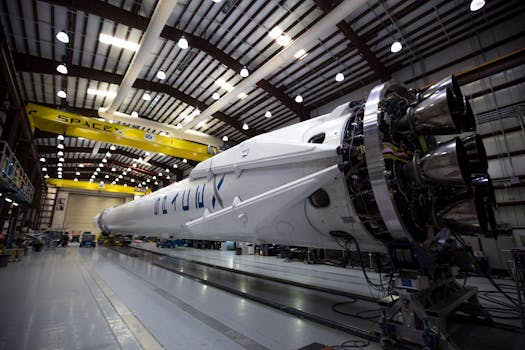
**
Texas Manufacturing Shows Signs of Life: June Index Offers Glimpse of Stability
The Texas Manufacturing Outlook Survey, released by the Federal Reserve Bank of Dallas, revealed a slightly less pessimistic outlook for the Lone Star State's manufacturing sector in June. While still contracting, the index edged upward, signaling a potential turning point amidst ongoing economic headwinds. This modest improvement offers a glimmer of hope for manufacturers struggling with inflation, supply chain disruptions, and weakening demand. The report provides crucial insights into the health of Texas's economy, a major driver of national economic growth.
Key Findings of the June Texas Manufacturing Outlook Survey
The June survey revealed several key indicators that paint a more nuanced picture than the purely negative headlines might suggest. While the overall index remained negative, the rate of contraction slowed, suggesting a potential bottoming out of the current downturn. This is crucial information for investors, policymakers, and manufacturers themselves, offering a more data-driven perspective on the challenges ahead.
Production Index: A key metric, the production index showed a slight increase, indicating a modest uptick in manufacturing output. This suggests that while demand may still be subdued, some manufacturers are seeing a gradual improvement in their ability to produce goods.
New Orders Index: Although still negative, the new orders index also showed a marginal improvement. This hints at a potential increase in future demand, suggesting that manufacturers may soon experience a greater influx of orders.
Employment Index: The employment index remained negative, indicating continued job losses in the manufacturing sector. However, the rate of decline appears to have moderated, suggesting that employment levels may be stabilizing.
Capacity Utilization: Capacity utilization remains below optimal levels, suggesting that manufacturers are not operating at full capacity. This is likely due to several factors, including decreased demand and ongoing supply chain constraints.
Prices Paid Index: Inflation continues to be a significant concern for Texas manufacturers. The prices paid index indicates that input costs remain high, adding pressure to profit margins.
Analyzing the Data: What Does it Mean for Texas Manufacturers?
The modest improvement in the June index shouldn't be interpreted as a complete turnaround for the Texas manufacturing sector. The economy continues to face considerable challenges, including persistently high inflation, rising interest rates implemented by the Federal Reserve to combat inflation, and ongoing global uncertainty. These factors continue to significantly impact the manufacturing landscape.
The positive signals, however, do offer a measure of optimism. The slowing rate of contraction suggests that the sector may be nearing a trough, and the modest improvement in production and new orders indicates that the worst might be behind us. This positive sentiment should be approached with caution but could signal future opportunities.
Challenges Remain: Inflation, Supply Chain Disruptions, and Workforce Shortages
Texas manufacturers still face significant headwinds. High inflation continues to squeeze profit margins, forcing businesses to grapple with increasing input costs. Supply chain disruptions, though easing in some areas, remain a significant challenge, impacting production and delivery times. Moreover, the ongoing search for skilled labor persists as a major constraint for businesses in the Texas manufacturing sector.
Opportunities for Growth Despite the Challenges: Focus on Innovation and Automation
Despite the challenges, there are opportunities for growth within the Texas manufacturing sector. Investment in automation and innovative technologies can improve efficiency, reduce costs, and enhance competitiveness in the global market. Furthermore, focusing on niche markets and specialized products can help manufacturers carve out a space for themselves in an increasingly competitive landscape.
Looking Ahead: Predictions and Outlook for Texas Manufacturing
Predicting the future of the Texas manufacturing sector requires careful consideration of numerous factors, including the overall economic climate, both domestically and globally. While the June index suggests a potential stabilization, it's crucial to remain vigilant and monitor key indicators closely.
The Federal Reserve's monetary policy, aimed at curbing inflation, will likely continue to impact the sector. While interest rate hikes aim to cool down the economy, they also risk slowing economic growth and potentially triggering a deeper recession.
Furthermore, the ongoing geopolitical situation and its impact on global trade also plays a significant role. Any unforeseen disruptions to supply chains or changes in global demand could significantly affect the trajectory of Texas manufacturing.
The Importance of Policy Support for Texas Manufacturers
Governmental support and policies aimed at fostering economic growth and reducing regulatory burdens will play a critical role in the recovery of the Texas manufacturing sector. Targeted incentives and investments in infrastructure, education, and workforce development can enhance the competitiveness of Texas manufacturers and attract further investment.
In conclusion, while the June Texas Manufacturing Outlook Survey indicates a slight improvement, the path to recovery is not without its obstacles. A combination of cautious optimism, strategic adaptation, and supportive government policies will be crucial for the Texas manufacturing sector to navigate these challenges and emerge stronger in the coming months and years. Continued monitoring of key economic indicators, along with proactive strategies from businesses and policymakers, will be instrumental in shaping the future of this vital sector of the Texas economy.




















